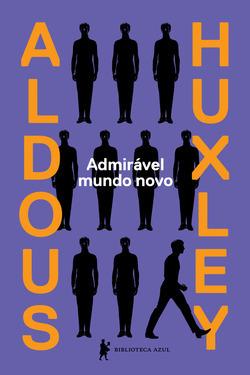The literary production of Brazilian authors of Romanticism is subdivided into three generations. These are the so-called romantic generations in Brazil.
The first generation is called nationalist or Indianist. The second romantic generation was named "generation of the century's evil" and the third of "condor generation".
First generation
Also called the nationalist or Indianist generation, it was marked by the exaltation of nature, a return to the historical past, medievalism, creation of the national hero in the figure of the Indian.
This allusion to the indigenous gave rise to the name of this phase of Brazilian literature.
Feeling and religiosity are also outstanding characteristics of the literary production of the first generation authors.
Among the main poets we can highlight Gonçalves Dias, Gonçalves de Magalhães and Araújo Porto Alegre.
Read too: first generation romantic
Second generation
It is the evil generation of the century, which was heavily influenced by the poetry of Lord Byron and Musset. For this reason, it is also called the "Byronic generation".
Works from this phase of literature are steeped in self-centeredness, bohemian negativity, pessimism, doubt, teenage disillusionment, and constant boredom.
These are the characteristics of ultra-romanticism, the true evil of the century.
The favorite theme is the escape from reality, which manifests itself in the idealization of childhood, in the dreamed virgins and in the exaltation of death.
The main poets of this generation were Álvares de Azevedo, Casimiro de Abreu, Junqueira Freire and Fagundes Varela.
Read too: second generation romantic and Ultraromanticism
Third generation
The Condoreira Generation was characterized by social and libertarian poetry. It reflects the internal struggles of the second half of the reign of Dom Pedro II.
This generation was intensely influenced by the ideas of Victor Hugo, his political-social poetry.
As a result of this connection, this phase of the literature is also called the "Hugoan generation".
The term condorism is a consequence of the symbol of freedom adopted by young romantics: the condor, an eagle that inhabits the top of the Andes mountain range.
Its main representative was Castro Alves, followed by Sousândrade.
Read too: third generation romantic and Condorsing
Romanticism in Brazil
the beginning of Romanticism in Brazil is classified by the arrival of the royal family in 1808. It is a period of great and intense urbanization, which allows the dissemination of a free field of ideas for new European trends.
Romanticism in Brazil is influenced by the liberal ideas of the French Revolution and US Independence.
At the same time, the country was moving towards independence. It is the ideals that make nationalism grow, after 1822, the return to the historical past, the valorization of earthly things and the exaltation of nature.
The works considered as a landmark of Romanticism in Brazil are the Niterói Magazine and the book of poetry Poetic Sighs and Longing, which were published in 1836 by Gonçalves Magalhães.
Read too: Romantic Prose in Brazil.
Generations of Romanticism in Europe
Romanticism in Europe is marked by the publication in Germany in 1774 of the novel Werther, by Goethe. This work lays the foundations of romantic sentimentality, of escapism through suicide.
They also directly influence the ideas of the ultra-romantic poetry of Lord Byron and Ivanhoé, by Walter Scott, in England.
Romantic Generations in Portugal
O Romanticism in Portugal it is subdivided into two generations: the First Generation and the Second Generation.
The first romantic generation in Portugal is characterized by authors who still used the Neoclassicism model, such as Almeida Garrett and Alexandre Herculano.
The second romantic generation in Portugal is represented by a literary production framed in ultra-romanticism.
This model can be seen in the works of Camilo Castelo Branco and Soares de Passos.
Romantic Generations in Poetry
Poetry is among the main forms of literary manifestations of the romantic generations in Brazil. There is representation of authors in all generations.
Gonçalves Dias
The author Gonçalves Dias (1823-1864) is considered responsible for the consolidation of Romanticism in Brazil.
It presents a nationalist poetry that idealizes the figure of the Indian, as in I-Juca-Pirama.
"My death song,
Warriors, I heard:
I'm a child of the jungles,
In the jungles I grew up;
warriors coming down
From the Tupi tribe.
From the mighty tribe,
who is now wandering
Due to fickle fate,
Warriors, I was born;
I'm brave, I'm strong,
I am a child of the North;
my death song,
Warriors, I heard"
Álvares de Azevedo
Álvares de Azevedo's poetry (1831-1853) is marked by the speeches of love, of death, of naive maidens, of the dreaming virgin, daughters of heaven, mysterious women in their teenage dreams. Frustrations, suffering, pain and death are common.
memory of dying
When the fiber breaks in my chest
May the spirit bind the living pain,
Don't spill a tear for me
In demented eyelid.
And don't even defoliate in impure matter
The flower of the valley that puts the wind to sleep:
I don't want a note of joy
Shut up for my sad thought.
I leave life as boredom leaves
From the desert, the walker's point
Like the hours of a long nightmare
That unravels at the bell of a bell (...)
Castro Alves
Unlike the poets of the first romantic generation, Castro Alves (1847-1871) expands the universe before intimate and deals, in addition to love, women, dreams, collectivity, abolitionism and the struggles of class.
It's like that in the slave ship, poem declaimed on September 7, 1868, at Largo de São Francisco Law School. The poem exalts the African people.
And there is a people that the flag lends
To cover so much infamy and cowardice...
And let her become that party
In the impure cloak of a cold bacchanal...
My God! My God! But what is this flag,
How impudent in the crow's nest...
Silence... Muse! cry, cry so much
May the pavilion wash in your tears...
Read too:
- Romanticism
- Questions about Romanticism
- Romanticism: characteristics and historical context
- Main works and authors of Romanticism


